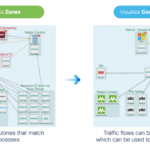Rational or not, public markets are where consensus gets formed on how much listed companies are worth, impacting the value of private companies in the process. But in a downturn, such as the one everyone suddenly agreed we are going through, that consensus can shift quickly.
Most of the stock fluctuation tends to hit public companies whose performance falls somewhere in the middle. Great is still great. Not great is still not great — and now more frequent. But how about companies that are doing well on one front, and not so well on another? That’s where there’s room for a shift in preferences.
The Exchange explores startups, markets and money.
Read it every morning on TechCrunch+ or get The Exchange newsletter every Saturday.
When it comes to cloud software stock, preferences have been shifting particularly quickly in the last few weeks. This led investment firm Battery Ventures to replace its annual report with a quarterly one that will better account for market volatility.
The first issue of Battery’s new report, The Cloud Quarterly, provides us with interesting insights on what type of SaaS companies have seen their valuation take a hit — or resist — in recent months, and what they have in common. Let’s explore.
Rule of 40 101, and why it matters
The key takeaway from the report, from our perspective, is that investor preference for software (SaaS) companies has changed from a weighting favoring growth toward a greater focus on profitability. Naturally, there has been chatter about this “return to fundamentals” in startup land as tech stocks slid in early 2022, but just how things have shifted — and how far — is illustrative and critical comprehension for today’s technology and startup markets.
In simple terms, investors now value software companies that meet the Rule of 40, but with a greater free cash flow focus than sheer top-line expansion. The Rule of 40 states that a software company’s growth rate added to its profitability should equal 40. So if a company is growing at 25% year over year and has 15% profit margins, that’s great — it meets the Rule of 40. A company with 20% growth rates and 5% margins would not, to provide another example.
To understand what we’re talking about, we need to get into the nitty-gritty of a few charts. Trust us that this will be worth your time. We begin with how the Rule of 40 looks in chart form, starting with the one on the left.
Leave a Reply
You must be logged in to post a comment.

